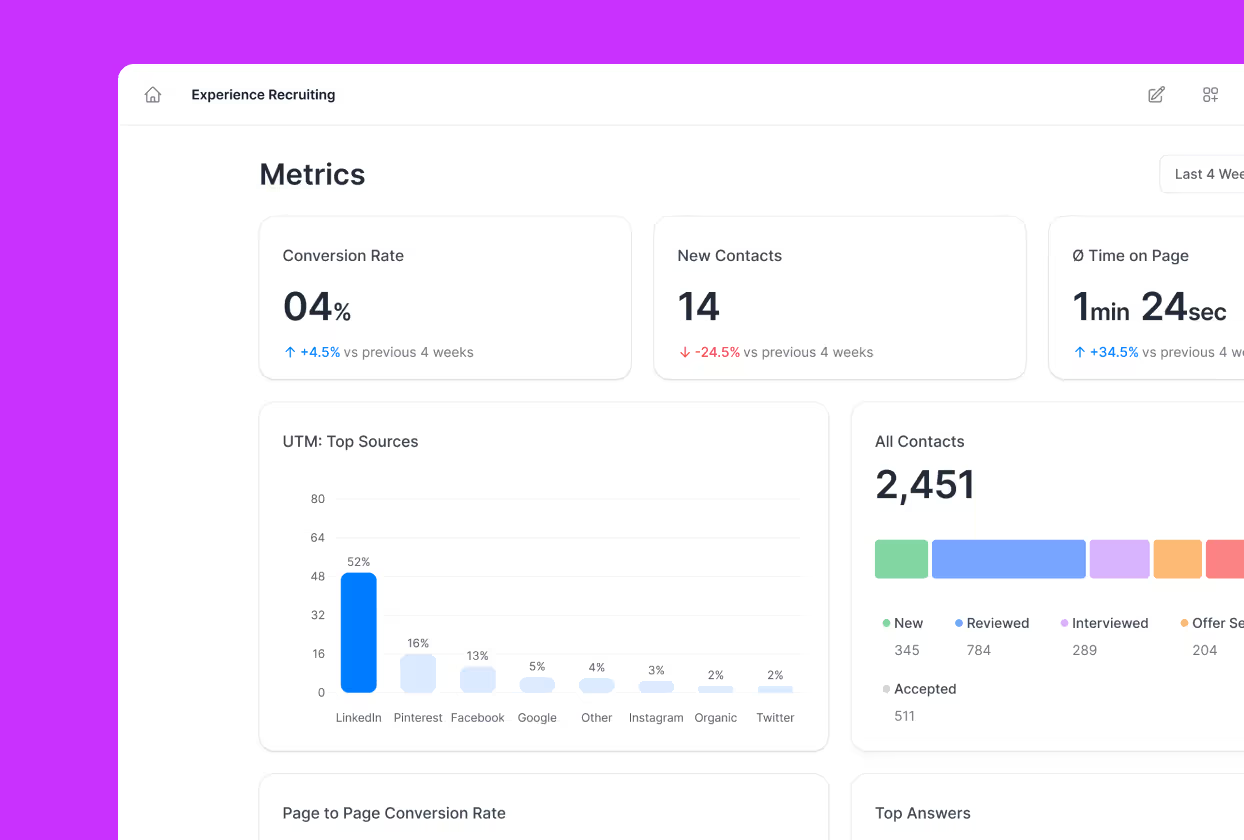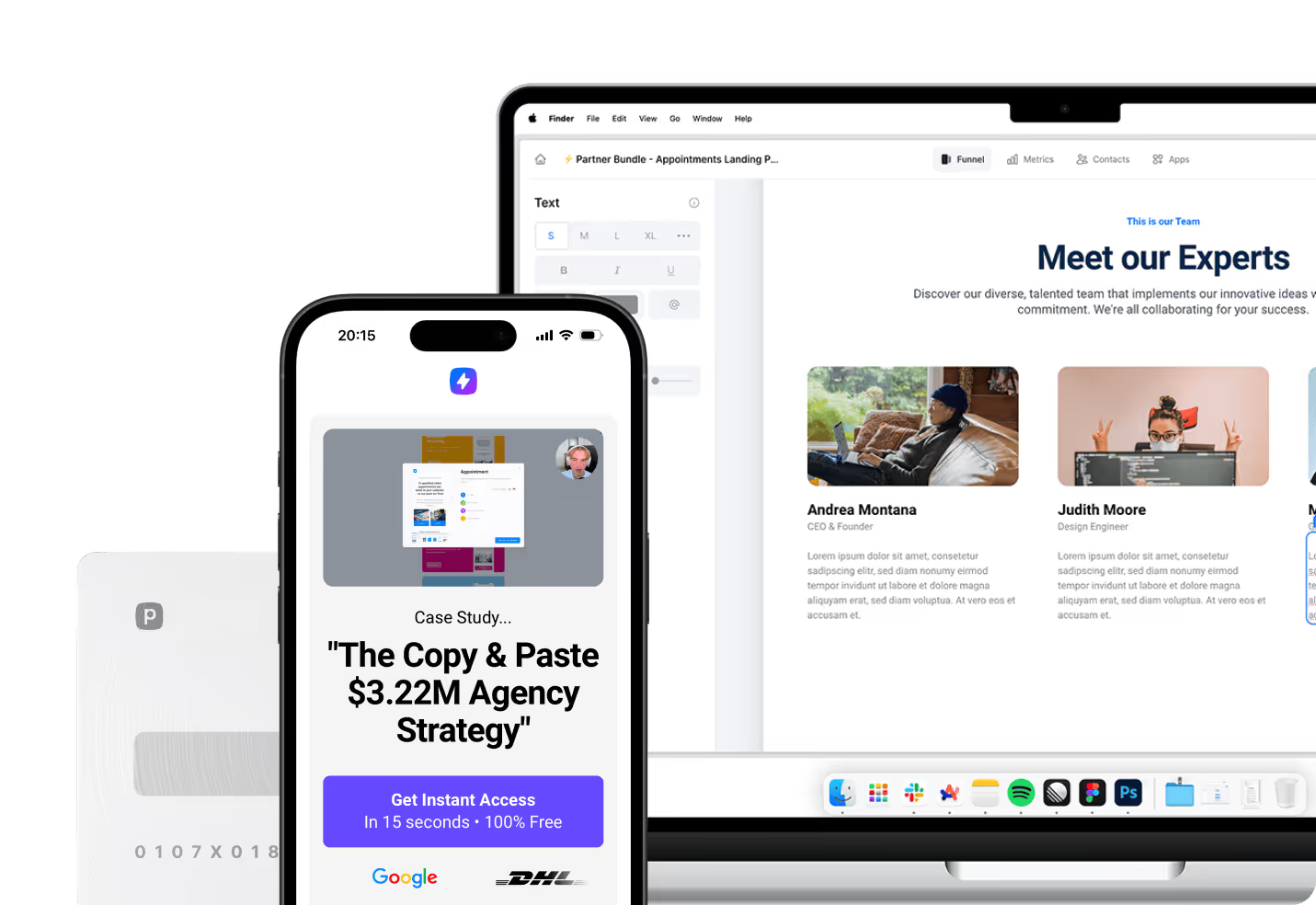Digital marketing success hinges on choosing the right tools to capture leads and automate campaigns. Ontraport and Leadpages are two standout platforms, each with a unique approach to helping businesses grow. While both offer powerful features, their strengths cater to different needs, making it essential to understand what sets them apart before making a decision.
What Makes Ontraport and Leadpages Different?
Selecting a marketing platform is more than a technical choice—it shapes how you engage with customers and scale your business. Ontraport is designed as an all-in-one marketing automation powerhouse, offering CRM, email marketing, landing pages, and more under one roof. This unified approach streamlines operations and data management, making it a favorite for businesses seeking a central hub.
Leadpages, by contrast, focuses on one thing: helping you create high-converting landing pages and lead generation assets with ease. Its intuitive drag-and-drop builder, conversion-optimized templates, and seamless integrations make it a go-to for marketers who want to launch campaigns quickly and see results fast.
Understanding these core philosophies is the first step toward choosing the platform that fits your business goals.
Transform Your Marketing with Perspective Funnels
While traditional platforms like Ontraport and Leadpages have their strengths, a new generation of marketing tools is emerging to address the evolving needs of today's mobile-first world. Perspective Funnels represents this evolution, offering a mobile-first approach that's built from the ground up for how people actually browse and engage online today. Unlike desktop-adapted solutions, Perspective is designed specifically for the 98.5% of users who primarily access content through their mobile devices. The platform combines lightning-fast loading speeds with modern design templates and interactive tools that create engaging experiences optimized for mobile consumption. This innovative funnel builder streamlines the entire marketing process while maintaining the sophisticated functionality modern marketers demand.
What sets Perspective apart is its seamless integration of essential marketing functions without the complexity often found in comprehensive platforms. The system includes built-in CRM capabilities, advanced analytics, and personalization features that allow marketers to create individualized experiences based on visitor behavior. This makes it particularly attractive for creators, agencies, and mobile-focused businesses who need the power of an all-in-one solution with the simplicity and speed of a specialized tool. Perspective effectively fills the gap between Ontraport's comprehensive but complex approach and Leadpages' focused simplicity, offering a balanced solution that prioritizes both functionality and ease of use in a mobile-optimized environment.
Exploring Ontraport’s All-in-One Capabilities
Ontraport stands out for its comprehensive suite of tools that cover the entire customer journey. The platform’s visual campaign builder lets you map out complex automations, using triggers and conditions to personalize every interaction. This means you can nurture leads, automate follow-ups, and manage sales pipelines—all from a single dashboard.
The CRM functionality is robust, tracking every customer interaction and storing detailed records. Custom fields and segmentation options allow for highly targeted campaigns, while built-in e-commerce features enable you to process payments, manage subscriptions, and track sales without leaving the platform.
Membership site management and affiliate program tools are also included, making Ontraport a versatile choice for businesses with diverse needs. Reporting and analytics are integrated throughout, providing actionable insights to optimize your marketing efforts.
Leadpages: The Specialist in Conversion Optimization
Leadpages takes a focused approach, excelling at creating landing pages, pop-ups, and alert bars that drive conversions. Its drag-and-drop editor is user-friendly, allowing anyone to build professional pages without coding skills. Templates are sorted by conversion rate, giving you confidence that your designs are built to perform.
A/B testing is built in, so you can experiment with different headlines, images, and calls to action to see what resonates with your audience. The Leadboxes feature enables pop-up forms that can be triggered by clicks or timed events, capturing leads at the perfect moment.
While Leadpages doesn’t offer native CRM or email marketing, it integrates seamlessly with popular tools, making it easy to connect your lead capture efforts with your broader marketing stack.
Comparing User Experience and Ease of Use
Navigating Ontraport’s interface can feel like stepping into a command center. The platform’s depth means there’s a learning curve, especially for new users. However, the visual campaign builder and sidebar navigation help organize the complexity, and once mastered, the system offers unparalleled control over your marketing processes.
Leadpages, on the other hand, is all about simplicity. The interface is clean and intuitive, guiding users through the process of building and publishing landing pages. Tooltips and clear labels make it easy to get started, and the platform’s focus on conversion assets means you can launch campaigns in minutes.
For businesses that value speed and ease of use, Leadpages offers a streamlined experience. Ontraport, while more complex, rewards users with advanced capabilities and deeper integration across marketing functions.
Building Landing Pages and Forms
Both platforms offer landing page and form builders, but their approaches differ significantly. Ontraport’s builder is functional and integrates deeply with its automation and CRM features. You can customize templates, add forms that trigger automations, and process payments—all within the same ecosystem. However, design flexibility and visual polish may not match specialized tools.
Leadpages shines in this area, offering over 150 mobile-responsive templates designed for high conversion. The drag-and-drop editor provides granular control over layout and design, and widgets like countdown timers and progress bars add urgency and engagement. Forms can be easily integrated with email marketing services, and A/B testing tools help you optimize every element for better results.
For businesses where landing page performance is paramount, Leadpages offers specialized tools that go beyond Ontraport’s more generalized capabilities.
Marketing Automation and Email Campaigns
Ontraport’s marketing automation is a standout feature, enabling businesses to create sophisticated, multi-step campaigns. Automations can be triggered by a wide range of actions, from form submissions to purchase behaviors, and can include emails, SMS, tasks, and CRM updates. This level of control is ideal for businesses with complex customer journeys.
Email marketing is fully integrated, with support for broadcasts, automated sequences, segmentation, and detailed analytics. You can track engagement, run A/B tests, and optimize deliverability—all within the platform.
Leadpages takes a different approach, focusing on lead capture and integrating with dedicated email marketing services. While it offers basic automation, such as delivering lead magnets and sending notifications, it relies on integrations with tools like Mailchimp and ConvertKit for more advanced email campaigns.
This makes Leadpages a great fit for businesses that already have email marketing solutions in place and want to enhance their lead generation efforts.
All-in-One vs. Best-in-Class
Ontraport’s integration philosophy is to provide enough connections to key services while encouraging users to leverage its all-in-one functionality. Native integrations cover essentials like WordPress, Stripe, PayPal, and webinar platforms, while API access and Zapier expand possibilities for custom workflows.
Leadpages, as a specialized tool, depends heavily on integrations to extend its capabilities. The platform offers a wide range of native integrations with email marketing, CRM, webinar, and analytics tools. Its WordPress plugin makes publishing landing pages seamless, and Zapier support opens the door to hundreds of additional apps.
For businesses that prefer a best-in-class approach—choosing specialized tools for each function—Leadpages’ integration-focused strategy offers flexibility and scalability.
Which Platform Delivers More for Your Investment?
Pricing is a key consideration when choosing between Ontraport and Leadpages. Ontraport offers four plans—Basic, Plus, Pro, and Enterprise—ranging from around $79 to $497 per month. Each tier increases contact limits, user accounts, and feature access, with additional costs for exceeding limits or adding users. The platform’s value lies in consolidating multiple tools, potentially saving money and time for businesses that need a comprehensive solution.
Leadpages offers a simpler pricing structure, with Standard and Pro plans priced at approximately $37 and $74 per month when billed annually. The Standard plan includes unlimited landing pages and basic integrations, while the Pro plan adds online sales, A/B testing, and advanced features. Pricing is not based on contact counts, making it predictable for growing businesses.
For companies that already have CRM and email marketing tools, Leadpages provides high-quality landing page capabilities at a lower price point. Ontraport, while more expensive, delivers value by replacing several standalone tools with a unified platform.
Support, Resources, and Community Engagement
Both Ontraport and Leadpages are committed to customer success, but their support structures reflect their different focuses. Ontraport offers email, live chat, and phone support, along with onboarding calls for new customers. The platform’s knowledge base, video tutorials, certification programs, and annual conference provide extensive educational resources.
Leadpages provides email and chat support, with phone support available on higher-tier plans. The onboarding process is intuitive, with in-app tutorials guiding users through asset creation. Educational resources focus on conversion optimization, with webinars, blog posts, and a weekly podcast offering practical tips.
Active user communities exist for both platforms, providing spaces for sharing strategies and troubleshooting. Ontraport’s resources are broader, reflecting the platform’s complexity, while Leadpages’ materials are targeted to its core focus on landing page effectiveness.
Who Should Use Ontraport? Who Thrives with Leadpages?
Ontraport is best suited for established small-to-medium businesses that need a comprehensive solution for managing the entire customer lifecycle. Information marketers, online course creators, and membership site owners benefit from its integrated approach, handling everything from acquisition to retention in one place.
The ideal Ontraport user is ready to invest time in setup and training, often with dedicated marketing staff to leverage the platform’s capabilities. Businesses with recurring billing models, complex sales cycles, or a need for detailed customer tracking will find Ontraport’s features especially valuable.
Leadpages appeals to businesses focused on lead generation and conversion optimization. Small businesses, solopreneurs, and agencies that need to create professional landing pages quickly—without design skills—will appreciate its ease of use. The platform is perfect for running paid ad campaigns, launching new offers, and testing marketing messages.
Organizations with existing CRM and email marketing solutions can use Leadpages to enhance their conversion assets, while those with limited technical resources benefit from its straightforward interface.
Best Practices for Maximizing Each Platform
To get the most out of Ontraport and Leadpages, consider these best practices:
- Define your marketing objectives clearly before setting up automations or landing pages, ensuring every feature supports your business goals.
- Regularly review analytics and performance data to identify opportunities for optimization and growth.
- Take advantage of onboarding resources, tutorials, and community forums to shorten the learning curve and discover new strategies.
- Integrate your platforms with other tools in your marketing stack to streamline workflows and avoid data silos.
- Test different landing page designs, headlines, and calls to action to continually improve conversion rates.
- Segment your audience for personalized communication, leveraging CRM and automation features for targeted campaigns.
- Monitor integration performance and update workflows as your business evolves or new features become available.
- Stay informed about platform updates and new features to maintain a competitive edge in your marketing efforts.
Pricing Breakdown
Understanding the investment required for each platform helps you plan for growth:
- Ontraport:
- Basic: Starts at $79/month for 1,000 contacts and 1 user.
- Plus: $147/month for 2,000 contacts and 2 users.
- Pro: $297/month for 10,000 contacts and 3 users.
- Enterprise: $497/month for 20,000 contacts and 5 users.
- Additional users and contacts can be added for extra fees.
- Leadpages:
- Standard: $37/month (billed annually) or $49/month (billed monthly).
- Pro: $74/month (billed annually) or $99/month (billed monthly).
- Advanced: Custom pricing for larger organizations.
- All plans include unlimited landing pages and traffic, with features scaling by plan.
Connecting Your Marketing Stack
Both platforms offer robust integration options, but their approaches differ:
- Ontraport Integrations:
- Native connections with WordPress, Stripe, PayPal, Zoom, and more.
- API access for custom integrations.
- Zapier support for connecting to hundreds of additional apps.
- Specialized integrations for accounting, fulfillment, and video tools.
- Leadpages Integrations:
- Native integrations with Mailchimp, AWeber, ConvertKit, ActiveCampaign, and others.
- WordPress plugin for easy publishing.
- Zapier support for extensive app connections.
- Integration with analytics and webinar platforms for a complete marketing stack.
Which Platform Fits Your Business?
Choosing between Ontraport and Leadpages comes down to your business needs, growth stage, and marketing strategy. Ontraport is ideal for businesses seeking an all-in-one solution to manage complex customer journeys, automate marketing, and centralize data. The platform’s depth and breadth make it a powerful tool for scaling operations, but it requires a commitment to learning and implementation.
Leadpages is perfect for businesses that prioritize speed, simplicity, and conversion optimization. Its specialized focus on landing pages and lead capture makes it a valuable addition to any marketing stack, especially for those who already have CRM and email marketing tools in place.
Some businesses may benefit from using both platforms together—leveraging Leadpages for landing page creation and Ontraport for nurturing, sales, and retention. This hybrid approach allows you to capitalize on the strengths of each tool without compromise.
Actionable Insights for Marketers
Maximizing your marketing impact starts with choosing the right tools and using them strategically. Whether you opt for Ontraport, Leadpages, or a combination of both, focus on aligning platform features with your business objectives. Regularly review performance data, experiment with new strategies, and stay engaged with platform communities to keep your marketing fresh and effective.
Free trials and demos are available for both platforms, providing a risk-free way to explore their capabilities. Take the time to test each solution, involve your team in the decision-making process, and consider how each platform will support your long-term growth.
Elevate Your Marketing Strategy with the Right Platform
Selecting the best marketing platform is a pivotal decision that shapes your business’s ability to attract, engage, and retain customers. Ontraport and Leadpages each offer unique advantages, and the right choice depends on your specific needs and goals.
By understanding the strengths of each platform and following best practices, you can create a marketing ecosystem that drives results, saves time, and supports sustainable growth. For mobile-driven marketers seeking the perfect balance of speed, personalization, and performance, Perspective Funnels offers a compelling alternative that’s built for today’s mobile-first landscape. In an era where mobile optimization can make or break your conversion rates, choosing a platform designed from the ground up for mobile users ensures your marketing efforts align with how your audience actually engages with digital content. Explore your options, invest in learning, and take action to elevate your marketing strategy today.


















